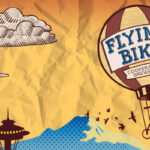The Trek 820 Mountain Bike is often considered a starting point for individuals venturing into the world of off-road cycling. As an entry-level hardtail mountain bike, the Trek 820 is designed to be durable and reliable, providing a solid foundation for new riders to develop their skills and explore trails. This article delves into the specifications, components, and overall value proposition of the Trek 820, offering a comprehensive overview for those considering this bike as their first mountain bike.
Frame and Fork: Robust Foundation
The heart of the Trek 820 is its Trek Custom Steel frame. Steel frames are renowned for their strength and durability, making them a forgiving choice for beginners who might be rougher on their equipment as they learn. The frame also includes rack mounts, adding versatility for commuting or light touring, beyond just trail riding. The frame is designed with a 135x5mm QR (Quick Release) system for the rear wheel.
Complementing the steel frame is the SR Suntour M-3030 fork with a coil spring and 75mm of travel. This suspension fork is designed to absorb bumps and vibrations on uneven terrain, enhancing comfort and control for novice riders. It features a 100x5mm QR system, consistent with the rear, and is specified for a maximum compatible travel of 75mm, indicating its design for entry-level cross-country riding rather than aggressive trail riding.
Wheels and Tires: Ready for the Trail
The Trek 820 rolls on Bontrager AT-550 alloy rims. Alloy rims offer a good balance of strength and weight for entry-level mountain bikes. These rims are 36-hole, which contributes to wheel durability, and are designed with a Schrader valve, a common and easily accessible valve type for inflation.
The hubs are Formula FM21 alloy at the front and Formula FM31 alloy at the rear, with a 7-speed freewheel. The tire clearance is specified as a maximum of 26×2.00″ for the frame, although the fork manufacturer’s specifications should also be consulted for tire size limits. This 26-inch wheel size is a classic mountain bike standard, known for its maneuverability and robustness, particularly beneficial for riders starting out and navigating varied terrains.
Drivetrain: Shimano Tourney Reliability
The Trek 820 utilizes a Shimano Tourney EF41 7-speed shifter and Shimano Tourney derailleurs (TY500 front, TY300 rear). Shimano Tourney components are widely recognized as reliable entry-level options, providing functional and consistent shifting performance.
The crankset is a Shimano Tourney TY301 with a 42/34/24 chainring configuration and 170mm crank arm length. This triple chainring setup offers a wide range of gears suitable for varying terrains, from climbs to descents. It’s paired with a sealed cartridge 73mm bottom bracket for durability and reduced maintenance.
The cassette is a Shimano TZ500 14-28 7-speed, and the chain is a KMC Z7 7-speed. This drivetrain combination is designed for ease of use and dependability, crucial for riders who are new to gear systems on mountain bikes. The bike includes VP-536 nylon platform pedals, which are practical for general use and learning to ride off-road.
Components: Comfort and Control
The contact points on the Trek 820 are designed for comfort and control. It features a Bontrager Sport saddle, aimed at providing a comfortable riding experience. The seatpost is a Bontrager alloy component, with varying lengths (300mm to 400mm) and a 29.2mm diameter depending on the frame size.
The handlebar is also Bontrager alloy, with width varying from 660mm to 690mm depending on size, and a 15mm rise. These dimensions are chosen to offer a balanced riding position for control and comfort. Bontrager SSR grips are included, providing a secure and comfortable hold.
The stem is a Bontrager Comp, Blendr compatible, with a 31.8mm clamp and a 7-degree rise, with lengths ranging from 60mm to 100mm depending on frame size. Blendr compatibility allows for integrated mounting of accessories. The headset is a 1-1/8” threadless type, a standard in modern bikes.
Braking is handled by Tektro alloy linear-pull brakes. These rim brakes are dependable and easy to maintain, providing sufficient stopping power for general trail riding and beginner mountain biking.
Geometry and Sizing: Finding the Right Fit
The Trek 820 is offered in multiple sizes, from XS (13″) to XL (21″), with each size corresponding to a recommended rider height. The geometry chart provides detailed measurements such as head tube angle, seat tube angle, reach, stack, and wheelbase for each frame size. These measurements are crucial for ensuring a proper bike fit, which is essential for comfort, efficiency, and control, especially for new riders. The geometry is designed to be relatively relaxed and stable, suitable for beginner mountain biking and recreational riding.
Weight and Rider Limit: Practical Considerations
The Trek 820 in ML size has a stated weight of 15.28 kg / 33.68 lbs (with tubes). This weight is typical for steel-framed entry-level mountain bikes. It’s important to note the maximum weight limit of 300 pounds (136 kg) for the bike, rider, and cargo combined. Riders should be aware of this limit to ensure safe and proper bike operation.
Conclusion: A Solid Start in Mountain Biking
The Trek 820 mountain bike stands as a reliable and durable entry point into mountain biking. Its steel frame, dependable Shimano Tourney components, and comfortable riding position make it a suitable choice for beginners looking to explore trails and develop their off-road riding skills. While it’s designed as an entry-level bike, its versatility with rack mounts also makes it practical for everyday use beyond the trails. For those seeking an affordable and robust hardtail mountain bike to start their off-road adventures, the Trek 820 presents a compelling option.


